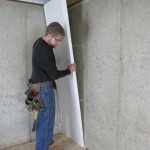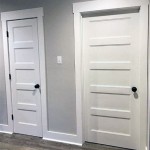Interior Painting Techniques: Essential Aspects for a Perfect Paint Job
Transforming the interior of your home with a fresh coat of paint is a rewarding project that can significantly enhance its aesthetics and ambiance. However, achieving a professional-looking finish requires meticulous attention to technique and the right tools. Here are some essential aspects of interior painting techniques to guide you:
1. Preparation: The Foundation for a Smooth Finish
Proper preparation is crucial for a flawless paint job. Start by clearing the room of furniture and any obstacles. Protect floors and other surfaces with drop cloths and painter's tape. Clean walls with a damp cloth or TSP solution to remove dirt, grease, and mildew. Fill any holes or cracks with spackling paste and let it dry completely.
2. Choosing the Right Paint and Tools
Selecting the appropriate paint for your project is essential. Consider the room's purpose, lighting conditions, and desired color scheme. Opt for high-quality paint with a finish that suits your needs (e.g., flat, eggshell, satin, or gloss). Invest in quality paint brushes, rollers, and a sturdy extension ladder for reaching high areas.
3. Cutting In: Defining Clean Edges
"Cutting in" involves painting around edges, trim, and corners where a roller cannot reach. Use a small, angled brush to carefully apply paint along these areas, creating clean and precise lines. Hold the brush perpendicular to the surface and use steady strokes to achieve an even finish.
4. Rolling with Precision: Applying the Bulk of Paint
Rollers are essential for applying paint evenly and efficiently on larger wall surfaces. Load the roller sleeve with paint and roll it onto the wall in vertical stripes slightly overlapping each stroke. Avoid applying excessive pressure or rolling back over wet paint, as this can lead to streaks or bubbles.
5. Backrolling: Smoothing Out Brush Marks
After cutting in, use a roller to "backroll" over the entire painted area. This technique helps smooth out brush marks and ensures an even finish. Backroll in the same direction as your previous roller strokes, using light pressure and a dry roller. This will remove any excess paint and leave a smooth, professional-looking surface.
6. Touch-Ups and Drying Time
Once the paint has dried, inspect the surface for any imperfections or missed spots. Use a brush or small roller to touch up any areas that require additional coverage. Allow ample drying time between coats (as per the manufacturer's instructions) to ensure proper adhesion and durability.
7. Finishing Touches: Bringing It All Together
Once the final coat of paint has dried, remove painter's tape carefully to reveal crisp, clean lines. Replace any fixtures or furniture that were removed and enjoy the fresh, revitalized look of your newly painted interior.
By following these essential interior painting techniques, you can achieve a professional-looking finish that will transform your home's interior and add beauty and value to your living space.

Transforming Spaces 15 Painting Techniques For Walls To Inspire

9 Stylish Techniques For Painting Living Rooms Gnh Lumber Home

Diffe Interior Wall Painting Techniques Ct Professional Painters

12 Amazing Wall Painting Techniques That Can Style Up Your Walls Go Smart Bricks
:max_bytes(150000):strip_icc()/Sponging-5b46a2dbc9e77c00376490c9.jpg?strip=all)
16 Decorative Wall Painting Techniques

Top Five Painting Techniques By Indigo Paints For Modern Interior Walls

12 Decorative Painting Techniques Accent Walls Color And Texture Belltown Design

12 Amazing Wall Painting Techniques You Can Do Airtasker

Transforming Spaces 15 Painting Techniques For Walls To Inspire

3 Stylish Painting Techniques For Walls
Related Posts








